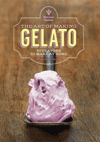I’ve never been much of a label reader. Recently, however, I’ve had to inspect food labels to avoid inflammation-causing foods and ingredients. It’s not easy finding foods void of the offending ingredients, but it is possible. Several times my husband growled, “Why do they [food processors] have to put that in there?”
It’s a common refrain. To clear up confusion and bolster consumers’ confidence in foods, it must be addressed.
“Consumers need to understand that not all ingredients are bad, and that certain ingredients are added for good reasons that are not purely for corporate profit at the consumers’ expense,” said Lauren Swann, a registered dietitian and owner of Concept Nutrition Inc., a Pennsylvania-based consulting service specializing in food labeling and nutrient analysis. “Just because a consumer can’t pronounce or doesn’t understand an ingredient doesn’t mean the ingredient is evil.”
Consumers want information
Consumers want to be in-the-know about ingredients. Shoppers are looking for labels that are clean and clear. “Clean” label with transparency was No. 2 on Mintel’s list of five key trends in 2015 for the U.S. food and drink market. And according to the 2015 “What’s Trending in Nutrition” survey from Pollock Communications, “What’s in a label?” was identified as the 11th trend out of 15.
Although there are no formal definitions, a “clean” label is often described as having a relatively small number of “natural” ingredients and to be devoid of artificial colors, flavors or preservatives; whereas a “clear” label has been described as using only necessary and familiar ingredients with clearer and simpler claims on the label and transparency regarding ingredients.
A new survey of more than 1,100 moms across the United States found that many are drawn to naturally derived ingredients and are looking for foods without preservatives, synthetic colors, allergens and genetically modified organisms, according to the “Thought for Food” white paper prepared by Chr. Hansen. Specifically, 84% of moms feel better knowing their food contains only natural ingredients and 83% wish that U.S. food manufacturers would offer more natural options. Of the 63% of moms who read labels always or most of the time before purchasing a food product, 48% think that food labels are confusing or hard to understand.
KISS and tell
What does this mean for food formulations and labeling? In a nutshell: KISS (keep it simple sweetheart) and tell (provide helpful information). The challenge for food companies is to formulate healthful products that include only necessary ingredients and to explain the source and function of ingredients, without cluttering the label.
The dairy industry has an advantage here, noted Sarah Hines, market specialist for dairy at DuPont Nutrition & Health, New Century, Kan.
“Since [many] dairy products are already perceived as natural or cleaner label, being a dairy product or in the dairy case may be enough for your target market,” Hines said. She advises against making drastic decisions to remove key ingredients. “Regardless of trends in clean or clear label, functionality of the product is, and should be, top of mind. If an ice cream manufacturer wants to make a clean label ice cream, but [the result is] poor tasting ice cream, what’s the point?”
But do consumers perceive fortified foods as being “clean”? Louise Pollock, president of Pollock Communications, New York, said she believes it depends on the food and not necessarily the fortification.
“Clean foods are unprocessed or minimally processed,” she said. “Therefore, if a whole food, such as milk, is fortified, I would argue it’s still clean because it’s minimally processed.”
Cathy Arnold, regional formulations manager for Fortitech Premixes by DSM of Schenectady, N.Y., cited findings from the International Food Information Council’s 2013 survey: about half of consumers believe that fortified foods are worthwhile and two-thirds trust foods that have functionality.
“How this translates for fortification may mean that a consumer would ideally like a product with naturally occurring nutrients,” Arnold said. “But that’s not going to stop many of them from purchasing a fortified product to help maintain their health or to address a specific health condition.”
Swann says it’s time for consumers to become better educated about what ingredients are and what they do. Food companies can help by adding short descriptors after listed ingredients—referred to as functional labeling—in consumer-friendly language that’s reassuring yet concise. For example, instead of defining an ingredient on a food label as “a preservative,” note its specific function, such as “to protect color” or “to preserve freshness.”
“Consumers’ desire for clear label will lead in the direction of more functional labeling. I hope that’s what comes next,” said Swann.





